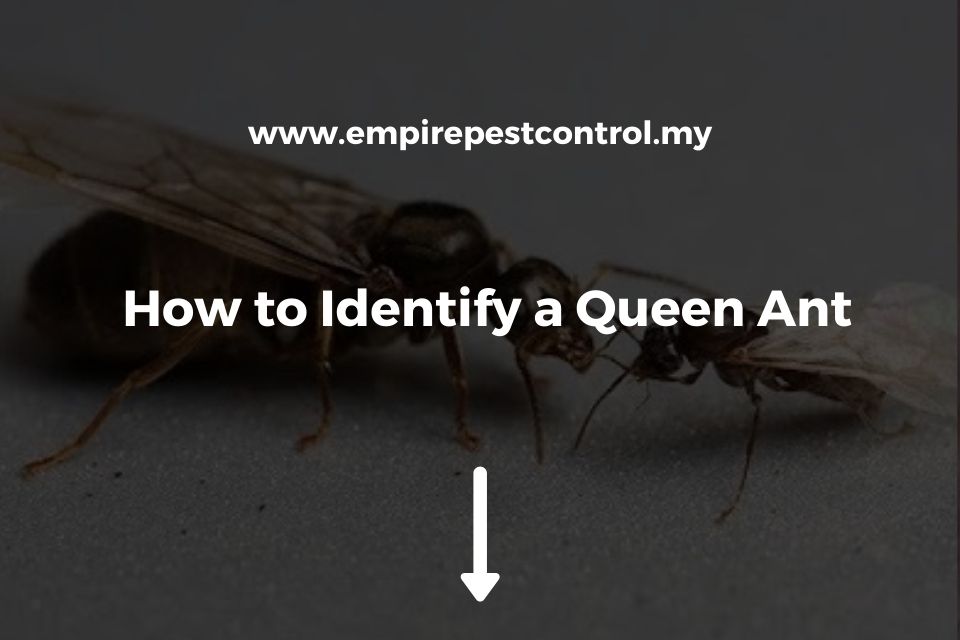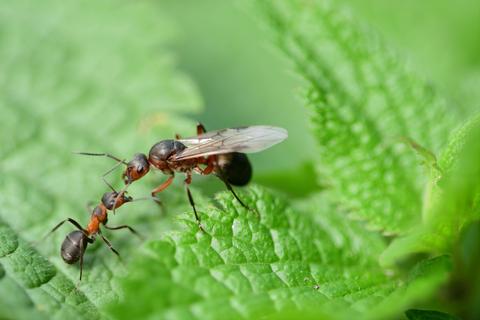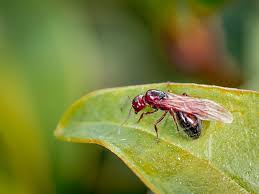Many homeowners often discover an ant infestation within their homes. These ants may appear on countertops, nestled within drawers, or even scaling the walls. While some species may be more aggressive, they all share a singular goal: seeking food and water. Unfortunately, without the assistance of a professional ant control service, dealing with these pests can prove to be a challenging ordeal.
Ants are able to move, function, and invade, all thanks to their queen. Queen ants are responsible for a never-ending infestation since they can lay eggs rapidly. To know more about this type of ant and how to identify one, read our blog post below:
Contents
What are Queen Ants
Queen ants are the largest form of ant in the colony. They are also responsible for laying eggs and creating a never-ending infestation. A queen ant has wings that extend up to an inch or more when they are fully developed. They shed their wings after mating and they will start to look for a nesting site where they can lay their eggs.
Queen ants are usually seen flying or crawling on the ground, but they will also leave behind a trail for others to follow. This is why you must find out where queen ants are nesting in your home because this will be where all of the other worker ants come from and eventually cause an infestation throughout your entire property and maybe even neighbors.
Here are four tips for identifying a queen ant:
Tip 1: Check The Size and Color of the Ant
It is important to check the size and color of ants to identify which one is their queen. Queen ants measure between 13-17mm long with a huge abdomen. Their abdomens are also darker in color, and sometimes they have wings that remain attached to them.
Queen ants are yellow, black, red, or dark brown in color, depending on their species. This will help you identify which ant is their queen without having to pick it up or risk getting stung by the ant.
Tip 2: See if The Ant Has Wings
The next thing to check is if the ant has wings. Queen ants have larger bodies, so they will be more likely able to fly or glide from one place to another without a problem. If you do see an ant that has wings, it’s probably their queen because she needs her wings for mating and then, later on, laying eggs in her nesting site.
Tip 3: Examine The Ant’s Thorax
Another thing to check is the ant’s thorax. The main difference between worker ants and queen ants is their thoraxes. Queen ants have a larger thorax that makes up for her wings because she will need this bigger size in order to carry them around with ease.
A smaller or thinner thorax means that it is probably one of the worker ants, but you can still use this tip if your infestation has both queens and workers since they each serve their own purpose when creating an infestation on different areas throughout your home.
Tip 4: Consider Where You Found the Ant
The last thing to do is consider where you found the ant. All ants are able to move around on their own, even queens, because they have legs that can help them walk and climb up walls.
However, queen ants prefer nesting in dark places like behind cabinets or inside of your wall since this is a safe place where the queen won’t be bothered by any other species in her colony when she’s laying eggs.
There aren’t many ways for people to get rid of queen ants, so it’s important not only how you identify one but also what steps you take after finding out if there actually is an infestation throughout your home instead of just one single worker ant crawling around here and there.
An easy way to spot out where the nest of these types of ants is would be by following their trail inside your home. Ants typically create trails along walls and other surfaces near food sources like kitchens and bathrooms since this is where most homeowners keep all of their food supplies stored away safely behind closed cabinets and doors.
Wrapping It Up
This blog post has taught you so much about how to identify a queen ant. If you have any questions or comments, please feel free to leave a message or call us today. We’re always happy to hear from our readers!



